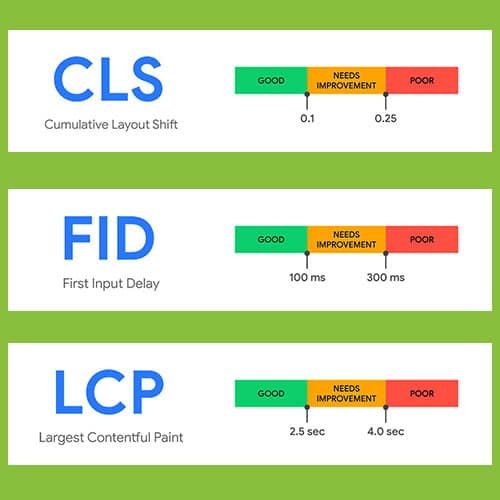Three Ways to Get Ahead of Google’s Expanded Text Ad (ETA) Sunset

As you may have heard, Google announced last month that advertisers will no longer be able to create or edit expanded text ads (ETAs) in a paid search campaign starting on June 30, 2022. This means that responsive search ads (RSAs) will soon be the only ad format advertisers can create or edit in Google Ads Search campaigns. ETAs will still continue to serve with your RSAs, and you will still be able to activate, pause, or remove existing ETAs, as well as see reporting on their performance.
The PPC industry was not particularly surprised with this announcement since it is only the latest development in Google’s trend for using their own machine learning and AI. However, advertisers will need to accomplish several things to prepare for next year’s change.
Advantages of Responsive Search Ads
Before getting into the specifics of preparation, what are some of the advantages that RSAs have over their ETA counterparts? Google lists a few benefits of RSAs:
- More flexibility to adapt to different device widths
- More relevant combinations of headlines and descriptions tailored to each search query and user location
- More opportunities to compete in auctions and match a higher number of queries (Google claims that 15% of queries every day are new searches) (source)
- More conversions. Using the same assets as ETAs, advertisers who transition to RSAs see an average of 7% more conversions at a similar cost per conversion (source)
So what are some ways advertisers can get ahead of this change?
#1: Repurpose high-performing content from your ETAs and use it to write new RSAs
Pull a report of your existing ETAs and note which ads have the highest click-through rates, conversion rates, etc. Use headlines and descriptions from these ads to write new RSAs. Google is recommending that you have one RSA with “Good” or “Excellent” Ad strength for each ad group in your account before June 2022. As you write or edit RSAs within the Google Ads UI, you will receive real-time copy suggestions from the Ad strength indicator (categories can be “Poor,” “Average,” “Good,” or “Excellent”). Use the “View ideas” feature to get recommendations on how to improve your Ad strength instantly. Suggestions include such things as: Add more headlines, include popular keywords in your headlines, make your descriptions more unique, etc.
Another option for creating high-quality ad copy is to use the ad variations feature which will allow you to easily test variants of ad text and see which performs better. This test is similar to campaign experiments but on a larger scale.
#2: Focus on improving Ad strength for existing RSAs
In addition to creating new ads for ad groups without RSAs, you can also work to improve the Ad strength of your existing RSAs. Google research shows that “advertisers who improve Ad strength for their responsive search ads from ‘Poor’ to ‘Excellent’ see 9% more clicks and conversions on average.” The best place to see which of your RSAs need improvement is the Recommendations page for your account. From here, you can find existing responsive search ads that have “Poor” or “Average” Ad strength ratings. Use the Ad strength indicator to quickly improve your ads.
#3: Use best practices when writing RSAs
Here are a few tips on best practices for RSA copywriting and editing:
- Use Google Ads Editor or Google Ads API to edit and upload ads at scale
- Use all 15 headlines and 4 descriptions in each RSA. The more options Google has, the better it can optimize for performance
- Try not to pin assets unless absolutely necessary. If you do pin a headline or description, it’s best to use 2–3 options for the same position. For example, you could pin two variants of a product name to Headline 1. This will cause Headline 1 to show one of the pinned variations each time the ad is served.
- If you have text that must appear in each ad combination, pin it to Headline 1, Headline 2, or Description 1. Any content in Headline 3 or Description 2 is not guaranteed to show every time.
- Ensure your headlines and descriptions can stand alone
- Ensure your headlines and descriptions make sense in all combinations
Bonus Tip: Pair broad match keywords with Smart Bidding and RSAs
Google also recommends combining broad match keywords with Smart Bidding and RSAs. The rationale behind this is that your broad match keywords allow your ads to show for more relevant queries, while at the same time optimizing for conversions (or cost per conversion). Says Google: “Advertisers that switch from expanded text ads to responsive search ads, using the same assets, in campaigns that also use broad match and Smart Bidding see an average of 20% more conversions at a similar cost per conversion.” That’s a huge increase in incremental conversions! Based on this data, it might be worth a try to test this strategy and see if it works for you.
By following these tips, you can make sure to stay ahead of the competition and be prepared for the ETA sunset next year.
You May Also Like
These Related Stories

Intro to Responsive Search Ads (RSAs)

Increase Leads / Conversions on Facebook Using Emojis

No Comments Yet
Let us know what you think